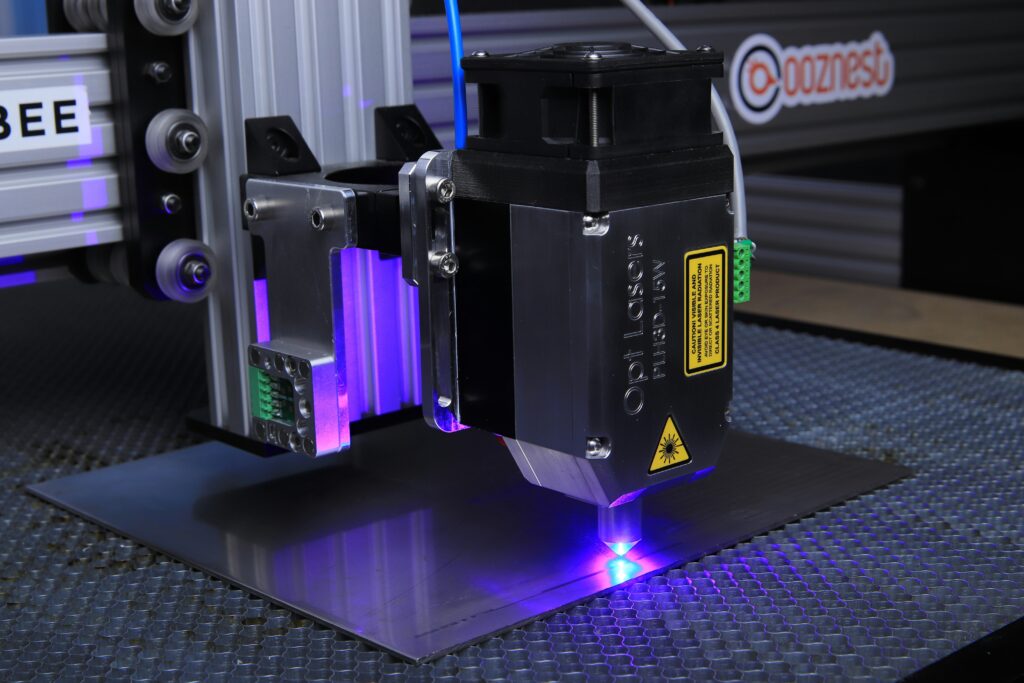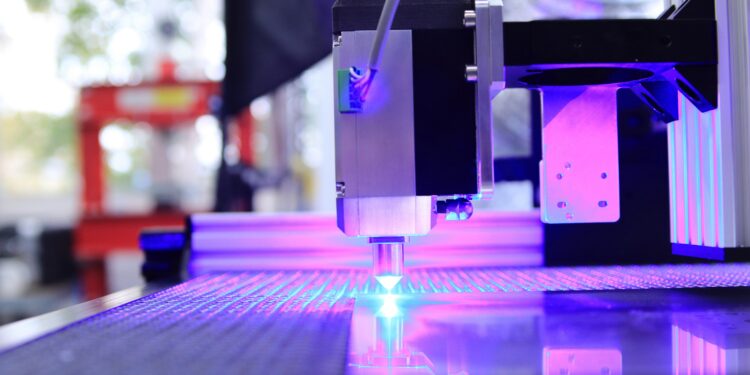MicroVision, Inc. (NASDAQ:MVIS) is a trailblazing technology company that has spent over three decades at the forefront of laser-based sensing and perception systems. Founded in 1993 and headquartered in Redmond, Washington, MicroVision is recognized as a pioneer in the field of laser beam scanning (LBS) and LiDAR (Light Detection and Ranging) technologies. Its deep roots in photonics, micro-electromechanical systems (MEMS), and real-time sensor integration have positioned the company as a powerful enabler of next-generation autonomous systems in automotive, industrial, and defense markets.
Originally focused on augmented reality and projection technologies, MicroVision has continually evolved to meet the demands of the digital transformation era. Today, the company is best known for its highly advanced solid-state LiDAR sensors and integrated perception software, which allow machines—whether autonomous vehicles, mobile robots, or drones—to see, interpret, and interact with the world around them. Through its proprietary platform, MicroVision delivers not just raw sensor data, but actionable insights with edge-based processing and intelligent object recognition capabilities.
With a full-stack solution that combines hardware, embedded software, and AI-powered perception layers, MicroVision’s technology is a cornerstone of safety and performance in autonomous mobility. Its core sensor lines, including the MOVIA and MAVIN families, are built to meet the rigorous performance and cost-efficiency standards required by global automotive OEMs, Tier 1 suppliers, and industrial automation leaders. These sensor systems offer real-time 3D mapping, velocity detection, obstacle classification, and situational awareness—key ingredients in the race toward safe and scalable autonomy.
In 2023, MicroVision significantly expanded its capabilities and global reach through the acquisition of assets from Ibeo Automotive Systems, one of the oldest and most respected LiDAR firms in Europe. This strategic acquisition provided access to Ibeo’s IP portfolio, customer relationships, and production-ready sensor platforms, further enhancing MicroVision’s competitive position across global markets.
Backed by a strong intellectual property portfolio, strategic partnerships—including a production ramp supported by ZF Group—and growing traction in high-potential verticals such as autonomous vehicles, automated guided vehicles (AGVs), autonomous mobile robots (AMRs), and military-grade perception systems, MicroVision is now entering a monetization phase after years of deep R&D.
As demand for real-time perception and autonomy continues to surge across transportation, logistics, defense, and smart infrastructure, MicroVision stands as one of the most compelling small-cap LiDAR companies publicly traded on the NASDAQ. With over 30 years of engineering excellence and a renewed commercial focus, the company is poised to lead the future of intelligent machine vision at scale.
Expansion into Defense and Industrial Markets Reinforces Multi-Sector Strategy
MicroVision’s recently reported Q1 2025 earnings reflect the company’s transformation from a speculative R&D play into a revenue-generating business with real-world deployments on the horizon. The quarter was marked by significant business highlights that enhance its long-term revenue visibility and demonstrate the growing commercial relevance of its technology. Notably, the company established a defense industry advisory board to accelerate its entry into the military and national security sectors. This strategic move acknowledges the increasing demand for high-performance LiDAR systems in defense applications such as autonomous ground vehicles, situational awareness, and perimeter surveillance.
In addition to its defense ambitions, MicroVision reported elevated commercial activity from leading industrial players in the AMR and AGV markets, with sales pipelines showing tangible signs of near-term revenue generation. These sectors are seeing rapid growth as logistics providers, factories, and warehouses modernize operations using autonomous navigation systems. MicroVision’s technology is ideally suited for such applications due to its low power requirements, high data accuracy, and software-defined capabilities.

CHECK THIS OUT: Lakeside Holding Limited (LSH): Key Insights and Strategic Developments and Lakeside Holding (LSH) Deepens Roots in Pharmaceutical Logistics with $1.5M Sinopharm Agreement.
Strengthening Executive Leadership for Scaled Commercialization
Another key milestone for MicroVision in Q1 2025 was the onboarding of Glen DeVos, the former Chief Technology Officer of Aptiv, as its new CTO. DeVos brings deep automotive and systems integration experience, which will be instrumental in shaping the company’s long-term product roadmap and customer engagement strategy. His presence reinforces MicroVision’s credibility with Tier 1 suppliers and OEMs, especially as the company continues to participate in seven high-volume RFQs from top-tier global automotive manufacturers.
The company also continues to deepen its relationships with global automotive OEMs for both off-the-shelf sensor deployments and custom development programs. These engagements are evidence of MicroVision’s increasing relevance in an industry where design cycles are long, but commercial relationships often translate into large-scale, multi-year contracts once production begins.
Financial Discipline and Capital Access Fuel Forward Execution
Financially, MicroVision demonstrated disciplined cost management and strategic capital positioning in Q1 2025. Revenue for the quarter came in at $0.6 million, primarily from industrial applications, while total operating expenses fell sharply to $14.1 million, down 47% year-over-year. Despite a net loss of $28.8 million, the company reported a material improvement in adjusted EBITDA, narrowing its loss to $10.7 million, versus $18.7 million in the same quarter the prior year.
Cash burn continues to decline, with $14.1 million used in operations versus $20.8 million in Q1 2024. The company ended the quarter with a robust $69 million in cash and equivalents, while retaining access to $143.4 million in capital through its at-the-market (ATM) equity facility and convertible note agreement. This strong liquidity profile ensures that MicroVision can meet rising demand without compromising operational execution.
Furthermore, MicroVision successfully raised an additional $8 million during Q1 2025, bolstering its balance sheet ahead of anticipated volume deliveries. The company’s manufacturing partnership with ZF, one of the world’s largest automotive suppliers, positions it to meet production demands expected to range between $30 million and $50 million over the next 12 to 18 months. This partnership underscores the company’s readiness to scale and deliver at Tier 1 volume standards.
Upcoming Catalysts: Retail Investor Day and Live Demonstrations
MicroVision is not only advancing on the commercial and financial fronts—it is also building momentum with the retail investment community. On May 20, 2025, the company will host its Retail Investor Day in Redmond, Washington, offering shareholders the rare opportunity to interact directly with the executive team, including CTO Glen DeVos. The event will feature ride-along demonstrations on local highways showcasing MicroVision’s perception stack in real-world conditions, followed by a town hall and interactive Q&A session.
This level of transparency and accessibility is rare among emerging technology firms and demonstrates the company’s commitment to investor engagement. Moreover, it allows stakeholders to witness firsthand the capability, reliability, and competitiveness of MicroVision’s LiDAR and perception platform.
A Platform Built for the Autonomous Economy
MicroVision’s technology architecture is built for a future where autonomy is embedded into transportation, logistics, and defense infrastructure. Its sensor suite offers precision object detection, depth perception, and real-time mapping that are essential for autonomous systems to operate safely and efficiently. With commercial traction in passenger vehicles, smart factories, logistics depots, and now defense scenarios, MicroVision’s addressable market is growing rapidly.
What sets the company apart is its full-stack approach—combining MEMS-based LiDAR sensors with on-device AI-powered perception software. This integration lowers system cost, reduces latency, and enhances real-time decision-making, which is vital in safety-critical applications.
Conclusion: MicroVision Is a High-Conviction AI and Autonomy Play in the LiDAR Space
MicroVision, Inc. (NASDAQ: MVIS) is entering a new era. With a streamlined cost structure, deepened leadership, strong customer engagement across multiple sectors, and access to significant capital, the company is well-positioned to convert years of research and development into meaningful revenue.
From defense expansion and industrial automation to automotive RFQs and ZF-backed production scaling, the company’s forward visibility is clearer than ever. Investors seeking exposure to next-generation perception technologies and autonomous system enablers should strongly consider MVIS as a long-term growth opportunity. As real-world deployments accelerate, MicroVision is poised to capture a significant share of the LiDAR and perception software market—and potentially deliver transformative returns to shareholders in the years ahead.
READ ALSO: Lakeside Holding (LSH) Acquires Hupan Pharmaceutical to Enter China’s Medical Logistics Market and Lifeway Foods (LWAY): Probiotic Pioneer Targets $195M Revenue in 2024.






